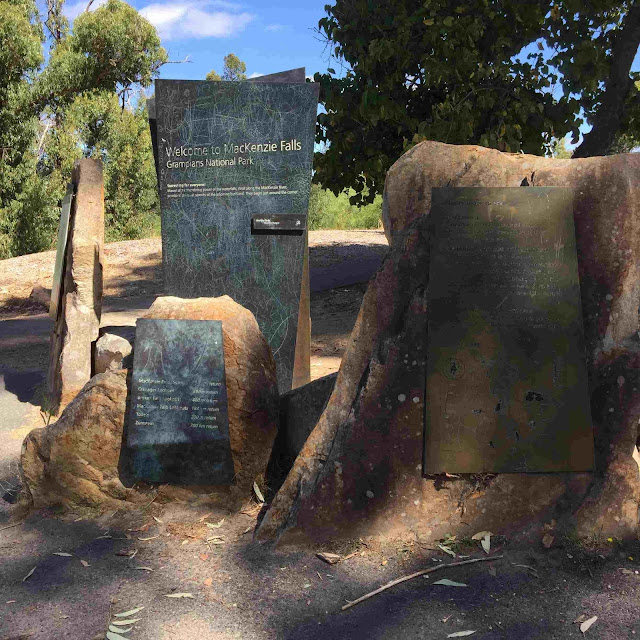Starting Week Four -and almost halfway
through our trip, we decided to go to the Chinese museum Gum San. The
first gold strike in the area was in 1854 by American miner Joseph
Pollard. Three years later a group of Chinese miners on their way to
the Central Victorian Goldfields discovered the world's richest
shallow alluvial gold at the Canton Lead, where Gum San now stands.
This find marked the beginning of the growth in the area. A visit to
Gum San is really worthwhile. It tells the story behind the why the
Chinese walked from Robe, South Australia to the Central Victorian
Goldfields, why they kept secret their find, the animosity towards
the Chinese by other miners, etc. A really great display with hands
on games, dress-ups, gold panning, calligraphy, and Chinese computer
games. The view from the second floor was good and the roof of the
building is special – all hand made tiles. I liked the ROOSTER on
the roof.
The cost is only $8 and we spent almost 3
hours in this building.
The next day we decided to go to Halls
Gap in the Grampions. We did loop, leaving Ararat and visiting
Cathcart, Moyston, Pomonal, Halls Gap, Stawell, Great Western, and
back to Ararat. Not far out of Ararat we came to Pinkey Point. This
is the site where Joseph Pollard found the first alluvial gold in the
area.
The area still has some of the mines
visible.
Cathcart was only small, and Moyston,
only 15 mins from Ararat is the birthplace of Australia Rules
Football. A memorial to Thomas Wentworth Wills is on display in a park
across from the recreation grounds. Wills was born in Paramatta, NSW
in 1835. His family moved to the area in 1839 and started a merino
sheep run. It was Thomas Wills who played a game with the local
Aboriginal children, and that was the forerunner of Australian Rules
Football.
Gold was found in the Moyston area in
1857, and this was the beginning of the development of the town.
Pomonal is another lovely village. Only a short distance is Halls Gap
and the Grampions National Park. The park is famous for walks and
scenery. We started at the Halls Gap info centre, which is located in
a large building, but the info area is very tiny. We were able to get
a small map of the area. Halls Gap is a small village with heaps of
walking tracks, cafes, and wineries. We headed down to the Lake Bellfield
and then started on a circuit back to Halls Gap, only to find part of
the road was a one way – the other way. Would have been good if the
fellow at the info centre had informed us of this when he suggested
the route.
Anyway, back to Halls Gap and a stop at
The Pinnacles. It is one road in and the same road out. The carpark
was large and almost full. Peter and Jon walked down to have look.
Back on the circuit again, we next stopped at The Balconies. What a
spectacular view. There is also another walk, so Jon started and
Peter followed. I love these times in the car with my crosswords and Sudoku.
MacKenzie Falls was to be our second
last stop. We parked the car and had to wait for three emus to move
away before we could get out.
The walk to the falls was a bit long,
so we decided to go to look at Lake Wartook. While having lunch at
Lake Wartook, a young couple, got their car bogged in the sand
somewhere in the bush, so we gave them a lift back to Halls Gap.
Stawell is only 20 mins from Halls Gap
and has a rich gold mining history. The Lynn family also lived in
Stawell, but I had no time to research, so another visit is needed.
There is a big gold mine still there. Gold mining ceased in Stawell
in 1920, but recommenced in 1982 and continues today. We went up to Big Hill and had lovely
views of the Grampions and surrounding area.
Great Western is a wine growing area and famous for the Seppelt
winery. It is situated between Stawell and Ararat and was first
settled as a sheep run in 1840, and then gold was discovered.
There is so much to see in and around Ararat,
friends went to the J-ward and said it was worth a visit – we will
go next time. The Langi Morgala Museum was originally a grain and
wool store and an old water trough is located outside. We stayed a
few more days and just relaxed by the lake, although I did spend one
day in the Regional Library looking through some family history
records. I didn't find Matthew Lynn, but I did find the death of one
of his children, at 9 years of age, so he did live here. Ararat is
larger than we expected, not as big as Ballarat, but it has many
supermarkets, cafes and fast food.













No comments:
Post a Comment